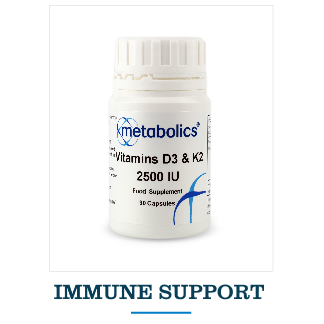Respiratory health is hugely important as maintaining sufficient oxygen has a knock-on effect for several processes within the body. This week’s Nutrition News covers two recently published studies that highlight the link between diet and lung health.
Find out more here.
Molecules in vegetables support respiratory health
Scientists at the Francis Crick Institute have unveiled a remarkable connection between the molecules in vegetables, such as broccoli and cauliflower, and lung health. Their research, discussed in the article “Molecules in vegetables can help to ease lung infection” by Science Daily, showcases the crucial role of the aryl hydrocarbon receptor (AHR) protein found in lung barrier sites. This study sheds light on how certain molecules found in cruciferous vegetables such as broccoli, kale, and cauliflower activate AHR, aiding in the maintenance of a robust lung barrier that fends off infections.
The study reveals that AHR activation has a profound impact on lung endothelial cells, the lining of blood vessels in the lung. The lung barrier is strategically designed with endothelial and epithelial cells to allow oxygen exchange while safeguarding against pollutants, viruses, and bacteria. When subjects were infected with the flu virus, the research demonstrated that AHR activation prevented the barrier from becoming permeable, reducing leakage into the lung spaces.
Furthermore, the study indicates that a diet rich in AHR ligands from cruciferous vegetables enhances lung barrier integrity. Subjects on such a diet exhibited less lung damage during infection, underlining the protective effect of AHR activation through dietary intake. Importantly, the research establishes a link between food consumption and AHR activity in viral infections, emphasising the value of maintaining a nutritious diet even during illness.
Andreas Wack, the Group Leader of the Immunoregulation Laboratory at the Crick, emphasised the significance of the findings, highlighting that maintaining a healthy diet, particularly with cruciferous vegetables, can play a pivotal role in supporting lung health during infections.
Moreover, this discovery has broader implications beyond lung health. Another study, conducted by a different team, demonstrated the activation of AHR in gut endothelial cells through dietary factors, highlighting its protective anti-inflammatory role. This connection between diet and barrier function has implications for gut health and support against infections.
These findings offer a new perspective on the relationship between diet and immune defence, highlighting the potential of AHR activation in barrier tissues as a way to support our natural resilience against infections. As the world grapples with respiratory viruses, such as COVID-19, understanding these mechanisms could provide valuable insights into strategies to bolster our immune systems and overall well-being.
Vitamin D could lower hip fracture risk
With the global population ageing, the prevalence of osteoporosis, a persistent musculoskeletal disorder, and resultant fractures is anticipated to surge. The repercussions of fractures, especially in the elderly, extend to reduced quality of life, heightened disability, and amplified susceptibility to refractures.
Vitamin D, renowned for its role in bone health, has been harnessed as a possible route to lessen the risk of osteoporosis. The consumption of active forms of vitamin D has been linked to improved bone mineral density (BMD).
In the quest to ascertain the potential of vitamin D supplementation in bone health support and possible fracture prevention, a study, reported in the article “Study suggests Vitamin D prescription lowers hip fracture incidence” by News-Medical.Net, was conducted utilising data from the National Database (NDB) from March 2012 to March 2019. This study focused on osteoporotic subjects over the age of 40 who had not received vitamin D for at least six months prior to the study initiation.
The investigation scrutinised information from a cohort of 422,454 participants who didn’t consume vitamin D and 169,774 participants who did. Rigorous statistical analyses, encompassing propensity score matching and Cox regression modelling, were employed, adjusting for variables such as age, gender, residence, pre-existing medications, and fracture history.
The findings underscored the tangible benefits of vitamin D supplementation. Individuals who consumed vitamin D exhibited a reduced fracture incidence, particularly in the case of hip fractures. However, the study also signalled the need for comprehensive future research, urging the incorporation of various factors such as comorbidities, lifestyle factors, and socioeconomic status to elucidate the intricate interplay between vitamin D supplementation and fracture reduction.
In a world grappling with an ageing demographic, the study offers promise in supporting bone health through to old age and mitigating against fracture risk. While further research is needed, studies like these are widely considered to be a hopeful step in the right direction for supporting our ageing population.
Low levels of vitamin K linked to poor lung function
Low levels of vitamin K in the blood have been associated with poor lung function and conditions such as asthma and COPD, according to a study published in ERJ Open Research, reported in the article “Vitamin K Deficiency Linked to Poor Lung Function: Asthma, COPD, and More” by SciTechDaily. Although this doesn't change current vitamin K intake recommendations, it does indicate a potential for further research, including the consideration of vitamin K supplementation for specific individuals.
The research, conducted by Danish scientists from Copenhagen University Hospital and the University of Copenhagen, involved 4,092 participants aged 24 to 77 in Copenhagen. Lung function tests, blood samples, and health/lifestyle questionnaires were used to assess the relationship between vitamin K levels and lung health.
The study found that individuals with markers of low vitamin K levels tended to have lower lung function as measured by forced expiratory volume (FEV1) and forced vital capacity (FVC). These individuals were also more likely to report conditions such as COPD, asthma, or wheezing.
While vitamin K's role in blood clotting and bone health is widely recognised, this study sheds light on its potential impact on lung health.
Vitamin K1 is primarily found in green leafy vegetables, while vitamin K2 is prevalent in fermented foods and animal products.
Dr. Apostolos Bossios from Karolinska Institutet emphasised the need for more research to understand the link between vitamin K and lung function. In the meantime, maintaining a balanced diet, avoiding smoking, engaging in exercise, and minimising air pollution remain important for overall lung health.
Share your thoughts
Agree with the findings in this week’s Nutrition News? Share your thoughts with us on Facebook and Twitter.
 Alison is Director and Founder of Metabolics who writes about Metabolics updates, events and natural healthcare. Her experience and passion for natural supplements and healthcare comes from her years of experience as a practising osteopath, having founded Metabolics in her search for high quality, natural products in her own work. Alison has been a qualified and practising Osteopath since 1981 and regularly gives seminars on a range of healthcare subjects to the wider practitioner community helping share her knowledge and experience.
Alison is Director and Founder of Metabolics who writes about Metabolics updates, events and natural healthcare. Her experience and passion for natural supplements and healthcare comes from her years of experience as a practising osteopath, having founded Metabolics in her search for high quality, natural products in her own work. Alison has been a qualified and practising Osteopath since 1981 and regularly gives seminars on a range of healthcare subjects to the wider practitioner community helping share her knowledge and experience.

